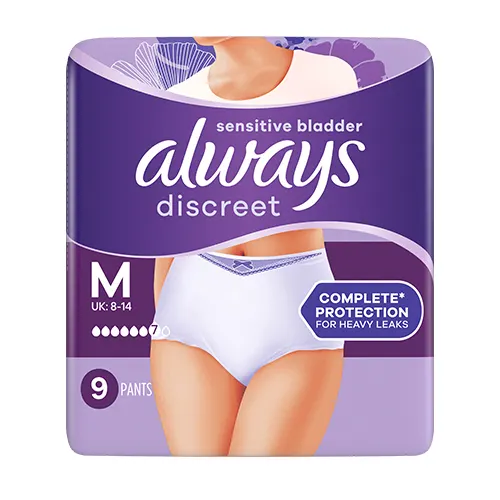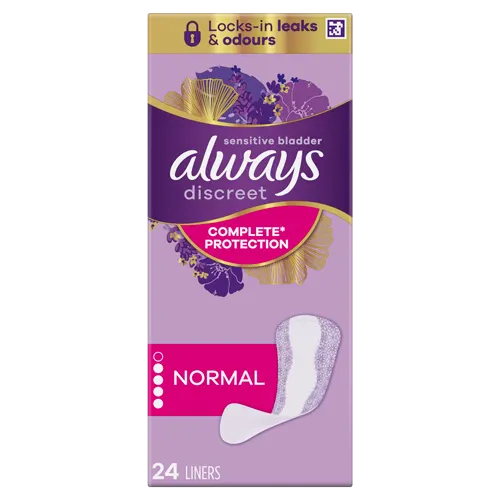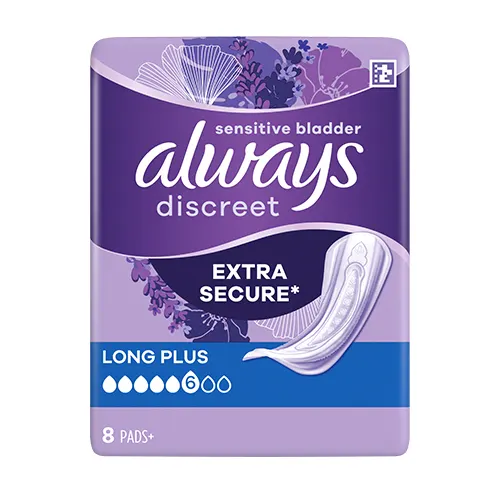
Bladder spasms, also known as overactive bladder syndrome, manifest as sudden, uncontrollable urges to urinate, frequent urination, and often nighttime urgency. While it is common and affects many individuals, there are effective treatment methods available. Find out more about the causes, symptoms, and preventive options for bladder spasms that can help you regain control over your life.
Table of content:
Understanding bladder spasms
Do you ever feel a sudden, intense urge to urinate, even shortly after using the bathroom? If so, you may be experiencing overactive bladder, also referred to as bladder spasms or bladder cramps. Symptoms include not only sudden, involuntary urges to urinate but also frequent trips to the bathroom during the day and night. However, it's important to understand that these symptoms are not caused by serious conditions such as urinary tract infections, cancer, or kidney stones. This is a functional issue, meaning that spasms in the urethra or bladder muscles are a matter of management and treatment rather than a sign of a severe illness. Although remember that if you have any concerns about bladder weakness, your first step should always be to consult your GP.
Symptoms of bladder spasms
If you suffer from an overactive bladder, you are likely to notice a range of unpleasant symptoms. These are:
- Sudden urge to urinate – You feel an overwhelming need to rush to the bathroom immediately, unable to delay it. This is one of the most prominent and disruptive symptoms.
- Bladder spasms after urinating – At times, even after using the bathroom, you might experience strange spasms, as if your bladder isn’t fully empty.
- Frequent trips to the bathroom, even at night – You may notice that you wake up several times during the night just to use the toilet.
- Discomfort during urination – Urinating may cause physical discomfort.
- Anxiety about sudden urges – Constant worry about needing to find a bathroom suddenly.
If any of these symptoms sound familiar, we recommend that you consult a doctor to explore effective prevention and treatment methods for this condition.
Causes of bladder spasms
Bladder spasms can have various causes. Below are some of the most common ones:
- Bladder tumours or stones – The presence of tumours or stones can physically irritate the bladder, leading to frequent and sudden urges to urinate.
- Diabetes – High blood sugar levels, typical in diabetes, can affect bladder function, increasing its activity.
- Age-related changes – As people age, bladder muscles weaken, leading to problems with incontinence and overactivity.
- Cognitive impairments – Individuals with cognitive disorders, such as Alzheimer's or other forms of dementia, may experience difficulties controlling the bladder.
- Consumption of large amounts of caffeinated or alcoholic beverages – These substances have a diuretic effect, increasing urine production and leading to more frequent urges to urinate.
- Use of diuretics – Diuretic medications, often prescribed for high blood pressure and other conditions, can also contribute to bladder spasms.
- Incomplete bladder emptying – When the bladder is not fully emptied, it can result in frequent and sudden urges to urinate.
Sometimes, the cause of bladder spasms remains unknown. If you're unsure of the reason behind your bladder spasms, consult a doctor who can help determine the most effective treatment options.
Diagnosing bladder spasms in women
If you experience sudden urgency to urinate or other bladder-related issues, your first step should be consulting a doctor. They can help rule out all known causes of your symptoms. A crucial part of the diagnostic process is a urine test, which can reveal whether a urinary tract infection—a common cause of overactive bladder — is responsible . You might also consider keeping a bladder diary, where you record how often you urinate, the volume of urine, and any episodes of incontinence. For added comfort during daily activities, you can use specialised Always Discreet incontinence products, which provide discretion and protection from bladder leaks. If necessary, your doctor might recommend urodynamic testing to better assess your bladder's function.
Urodynamic testing for overactive bladder
Urodynamic tests are specialised procedures designed to evaluate how well your bladder functions. What should you know about these tests?
- Urine flow measurements – This test measures how quickly urine flows out of the bladder. It helps identify potential blockages or weakened muscles.
- Cystometry – During this test, the capacity of your bladder is assessed, determining how much urine it can hold before you feel the urge to urinate. It can also detect abnormal bladder muscle contractions.
- Electromyography – This test analyses the activity of the muscles involved in the urination process.
Urodynamic tests are particularly helpful in diagnosing an overactive bladder, and where there is more complex mixed incontinence, especially when other methods have not provided clear results. They also aid in determining the most effective treatment approach.
Treatment for overactive bladder spasms
Treatment for bladder spasms varies from person to person. It’s important to remember that the first method may not always yield immediate results. Persistence is key, as many effective solutions are available.
Bladder training – This is often one of the first steps. It involves gradually increasing the time between bathroom visits. While initially challenging, this method can help the bladder adjust to holding urine longer, reducing sudden urges over time.
Pelvic floor muscle exercises - Known as Kegel exercises, these strengthen the muscles that control urination. They can be performed anywhere, anytime, and their effects can bring significant relief.
Maintaining a healthy weight matters. Excess weight can put additional pressure on the bladder. Even small changes in diet and increased physical activity can bring positive results. If these approaches don’t work, your doctor might recommend additional treatments, such as hormone therapy for postmenopausal women or Botox injections, to relax bladder muscles and reduce involuntary cramps.
Natural remedies for bladder spasms
Some individuals seek natural ways to ease spasms. Although herbal remedies and acupuncture lack comprehensive scientific validation, some studies suggest that acupuncture can help alleviate overactive bladder symptoms. If you're interested in these options, consult with your doctor first.
Preventing bladder spasms
Simple changes in daily habits can help prevent bladder cramps:
- Practice pelvic floor exercises – Regularly strengthening these muscles can improve bladder control.
- Stay physically active – Exercise enhances overall health and helps maintain a healthy weight.
- Limit caffeine and alcohol – These beverages may irritate the bladder and increase urgency.
- Maintain a healthy weight – Less weight means less pressure on your bladder.
- Manage chronic conditions, like diabetes – Proper management supports overall body function.
- Avoid smoking – Smoking harms your body, including your bladder.
Incorporating these habits into your daily routine can help reduce bladder cramps and provide greater comfort every day. Even small changes can make a big difference!





